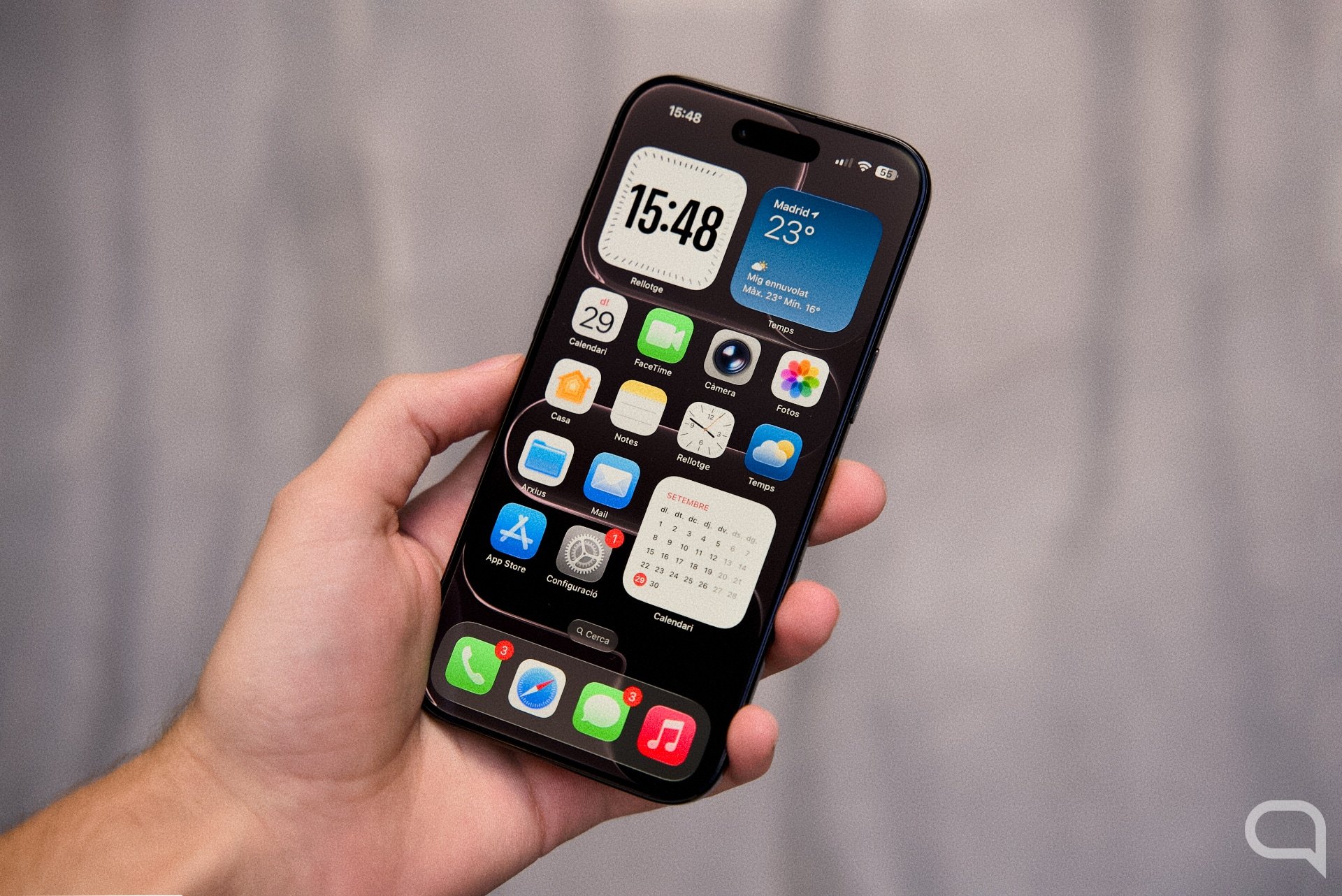Bill Nelson, the current head of NASA, said in an interview this year: “We want to stop China from coming in and saying the water belongs to them.” He was referring specifically to the moon’s south pole, an area on our moon that has suddenly become highly coveted. And it’s not just China and the US who want to achieve this: Russia and India, for example, are already accelerating their plans to achieve this in the coming years. Because?
There is water in the form of ice at the moon’s south pole. Scientists from the National Academy of Sciences of China estimate that there may be some This state has 270 billion tons of water. These deposits can become a source of hydrogen and oxygen, which can be used to make rocket fuel. But, in addition, the presence of other minerals is suspected, such as scandium, yttrium and lanthanide. These three metals are used in the production of computers, smartphones and other technological devices.
In other words: a potential lunar mine. How could China and the US come to an agreement? When Nelson admitted his concerns about China’s arrival at the moon’s south pole, he compared it to the situation in the Spratly Islands, an archipelago in Asia that has been disputed by six countries for years. Among them are China, the Philippines and Vietnam.
“This territory was in international waters and China came and claimed it; They started building runways,” Nelson said. And he insisted, “We want to prevent things like this from happening.” But can China claim sovereignty over any part of the Moon? Will the US be able to do this? In short: whose Moon is this?
NASA’s plans to find out who owns the Moon
Of all the planned missions to the Moon, the US appears to be the most advanced. NASA hopes to send a group of astronauts on the Artemis mission in late 2025. This will be the first time in more than 50 years that a person will set foot on lunar soil. China, always with greater secrecy, has said it wants to arrive there around 2030 – NASA has already said it fears it will be sooner. Russia has set the date for the next decade, and India for 2040.
NASA’s mission preparation isn’t all about technology. Along with developing equipment and vehicles, the US agency is promoting what they call Artemis Chords, an agreement the U.S. is promoting around the world to set guidelines for lunar exploration. They also refer to what might happen on Mars, comets and asteroids.
The initiative started in 2020. NASA has since taken steps to ensure that as many countries as possible sign the agreement. Nelson, the agency’s chief executive, frequently visits countries to reaffirm his support. Bulgaria this month became the 32nd country to sign the document. Spain, Argentina, Mexico, Japan, Brazil, Germany are already on the list. But India is the only space power to join the US plan.
The “Artemis Accords” establish “safety zones” which all signatory countries must comply with to prevent conflicts. It also establishes that space exploration must be carried out exclusively for peaceful purposes and in accordance with international law. and guarantees “safe and sustainable resource extraction”.

Controversy surrounding the Artemis Accords
The NASA leader said these were “common sense principles.” They serve as a guarantee of peace, cooperation and unified systems: “So that if someone has to help other astronauts, the ships have compatible docking systems.” But also, as Nelson noted in an interview last May, to put competition aside: “It is also impossible that someone could reach the Moon, seize territory and prevent others from entering it. And so I think about China.
The Artemis Accords are not so clear on all points. The security zones mentioned in the document are described as surfaces designated for specific activities of certain space actors. It explains that they will be temporary and will cease when said activity ends, but it doesn’t say anything more. Some experts warn that the lack of definition and clear purpose This could lead to gray interpretations that would violate the principle of non-appropriation of lunar territory.
“Depending on the perspective of a particular actor, safety zones can be described in different ways,” notes Alejandro C. Gilbert of the Colorado School of Mines in an analysis published in March in the journal Journal of Space Security. Gilbert says the most controversial areas appear to be resource extraction. “While buffer zones may be sufficient for small-scale resource extraction in the short term, the scale of future large-scale space mining will likely require a broader multilateral governance structure.”
Other analysts argue that these security zones will serve to limit access to the Moon to countries that are not parties to the Artemis Accords. This would make the US – the country that licenses most of the world’s space companies – “the de facto custodian of the moon, asteroids and other celestial bodies,” say Aaron Boley and Michael Byers of the University of British Columbia in The science.
Other Rules for Owning the Moon
For such reasons—and because of a historical political and commercial dispute—neither Russia nor China signed these agreements. However, they signed another agreement, which the adherents of Artemis refer to in a large part of their decrees.
In 1966, the United Nations created the Outer Space Treaty.. To the question of who the Moon belongs to, the rule clearly answers: no one. Not now, not ever. It states that no single country can claim sovereignty over the Moon and that space exploration should benefit all countries. More than 100 countries have ratified the treaty, which prohibits the testing of any weapons and military maneuvers on lunar soil and in space.
But other norms tried to resolve the contradiction. In 1979, the Moon Treaty appeared, which included a key clause: private entities. No part of the Moon, the document says, “may be owned by any state, international organization (intergovernmental or non-governmental), national organization or non-governmental organization or any individual.” But only twenty countries signed it. China, Russia and the USA are not on the list.
“Space mining is largely independent of existing policies and governance, despite these potentially high risks,” explains the article from the nonprofit RAND Corporation. Lunar mining “creates the potential for conflict between competing nation states as well as between non-governmental actors”.

Exploitation of large corporations
Barack Obama, the former US president, signed a law in 2015 that gave private companies the right to own the resources they extracted from space. “We think we can extract and use the resources of the moon in the same way that we can extract and use tuna from the ocean,” then-NASA Administrator Jim Bridenstine said in 2020.
NASA said it expects begin excavation of lunar soil in 2032. Gerald Sanders, a rocket scientist at NASA’s Johnson Space Center, said last June at the World Mining Conference that they are currently analyzing resource potential on the Moon to use the data to attract private investment. Companies such as Elon Musk-led SpaceX and Blue Origin are already collaborating with NASA.
Whose Moon is this? Once upon a time there was a madman named Genaro Gajardo Vera, a Chilean poet and lawyer. It is said that in 1954, Genaro went to the notary’s office in Talca to register his name as the sole owner of Luna. In return, he paid 42 Chilean pesos. With his intention, he made three publications in the Official Gazette. “Since there was no opposition, I was granted registration,” said a review by Sociedad los Condores de Talca, the organization Genaro was part of.
Genaro became famous. Legend has it that, fueled by the Talca Condors, President Richard Nixon asked Genaro to allow astronauts Aldrin, Collins and Armstrong to land on the Moon for the first time in 1969. The poet celebrated the “democratic gesture” and gave them his permission.
Genaro died in 1998 at the age of 79. Several media outlets in Chile and around the world report that he allegedly wrote in his will: “I leave the Moon to my people, full of love for their sorrows.”

Source: Hiper Textual














